Gearbox Software found something truly magical in their Borderlands series, a perfect blend of shooter and dungeon crawler with a story chocked full of humor and charm. While the Borderlands community has had no shortage of releases in recent years with both the Pre-Sequel and Borderlands 2 arriving on next gen consoles, the next logical step for Gearbox is Borderlands 3, right? Common sense would tell you yes if Gearbox Software was following the game plan laid out by most studios, where squeezing the absolute most money out of a series is paramount before fans eventually get tired of it. This isn’t the plan they are following, however. Instead, there’s something new on the horizon for Gearbox. Something big, something ambitious, something that once again uses the developer’s penchant for blending genres in interesting ways. That something is Battleborn and we recently got a chance to go hands-on with the game’s competitive and cooperative modes at a recent event for the game in which 2K flew us out on their dime and housed us for this one day preview.
This is Battleborn
Battleborn mixes first person shooters with role playing games. It takes ideas from the popular MOBA genre and integrates them into its more traditional competitive elements. It’s a beautiful five person cooperative experience driven by narrative, it’s a tense class-based competitive game as well. It’s a “Hero Shooter” that offers a wide variety of playable characters, all of which can be customized by the player. It’s both accessible and easy to learn for newcomers and deep enough for players to really sink their teeth into. Battleborn casts a wide net, hoping to snare not only those who loved their Borderlands titles, but those who might have wanted a little more depth from the shooter.
Cooperative Mode
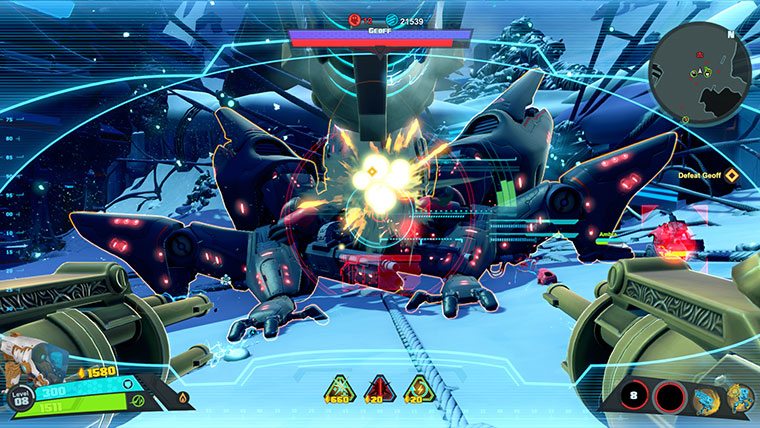
At first glance it would be understandable if you mistook Battleborn for a Borderlands title. The art styles are very similar. The gameplay is as well, with the cooperative game mode playing very much like what we saw in that series. While Battleborn features five players instead of four and focuses on the first person perspective, that’s where the similarities end. There’s a whole new system of hooks in this game, and this is where Gearbox starts to shake the formula up in different ways and lay the ground work for Battleborn’s competitive offerings as well.
Battleborn’s cooperative mode is built around a central narrative that allows them to introduce a number of characters. They’ve introduced twenty five thus far, and they’re extremely wide ranging. Elfs, Wizards, Robots, Humans, Soldiers, Samurai, and more — these many different characters and races have come rushing to the last remaining star in the galaxy. Solus, is the last bastion for the entire universe and a great war has erupted for these remaining resources. These heroes band together to fight off an enemy threat looking to extinguish this last hope. It’s an interesting method of gathering so many different types of characters in Battleborn, and a story I can’t remember hearing being told before.
Battleborn Cooperative Gameplay
Five person teams can be structured in any way. Players can strategize and use teams handpicked with heroes that complement each other such as tanks, support units, ranged units and others. No two heroes in Battleborn are the same. They’ve all got their own unique weapons and powers, strengths and weaknesses. Though throughout each stand alone story mission that pushes the overarching plot for the game, players can customize their character differently for each mission using the Helix System. In every mission, players can level-up their character through 10 levels that force you to pick a this or that ability. It’s one or the other, the combinations are endless. Simply kill enemies and you’ll earn experience that gives you the opportunity to add these skills to your arsenal.
These story missions are certainly familiar territory, especially to fans of the Borderlands series. There are objectives to complete, tons of enemies to slay, and levels that culminate in massive boss battles. Though Battleborn has a few other systems in place that change the formula with character load-outs and loot packs that can be earned by playing the game. These loot packs give your character an additional layer of customization with things like buffs to your abilities. The end result is something that trades in Borderlands’ seemingly endless number of weapons to find, for something that focuses on the ability to customize your character in endless ways. Tying this together are a system of shards which are found across the levels, which must be used to accomplish certain tasks on the battlefield. You can spend these shards to use these buffs and abilities for your character. You can spend them on things like sentries that can fly around the map and help your team, or you can purchase things like turrets to help take down enemies.
Competitive Capture Mode
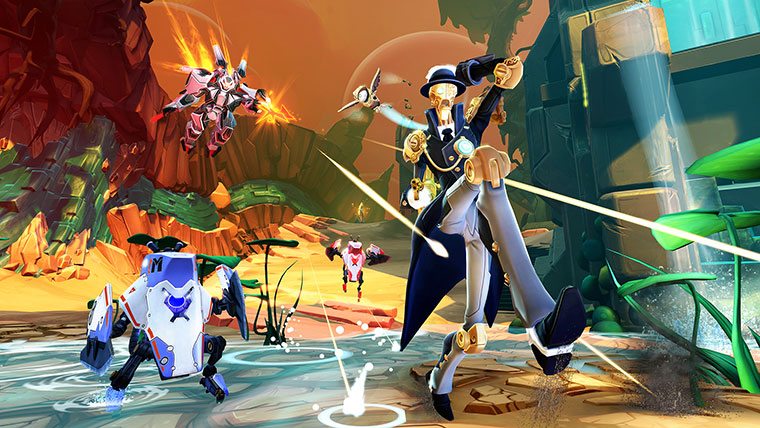
While Borderlands dabbled in competitive play with duels, Battleborn goes all-in for its competitive modes, offering gameplay ideas that are both familiar and fresh. Capture is one of the modes we got to go hands-on with and while at first glance it feels a lot like a territories mode where teams are tasked with controlling areas on the map to earn points, it’s the wide variety of characters and the systems that carry over from the cooperative modes that really make this mode standout to feel like something entirely different each and every time you play.
Depending on which character you choose and how you’ve decided to customize them and level them for that specific match, any match of Battleborn can play out differently than the last. In this gamplay video, I used Rath. He’s a character that has a very unique skill set and plays much like something you would find in a beat-em up type of game. He’s something completely different that relies on swords instead of guns, focusing on short range melee attacks and powers that cause the enemy to be tossed into the air.
Battleborn Competitive Capture Mode Gameplay
The core systems are still in place in this competitive mode. You’re still looking to both secure your objectives and contribute to the team, but you can also purchase things like sentries, buffs, and turrets to help your team in other ways. There’s also an interesting balance that comes into play in Battleborn’s competitive modes. Sure, it’s easy to run around and use your abilities, but there’s a layer of strategy for competitive teams that has different heroes working well together as players can play roles such as healer, support, tank, and more.
Competitive Meltdown Mode
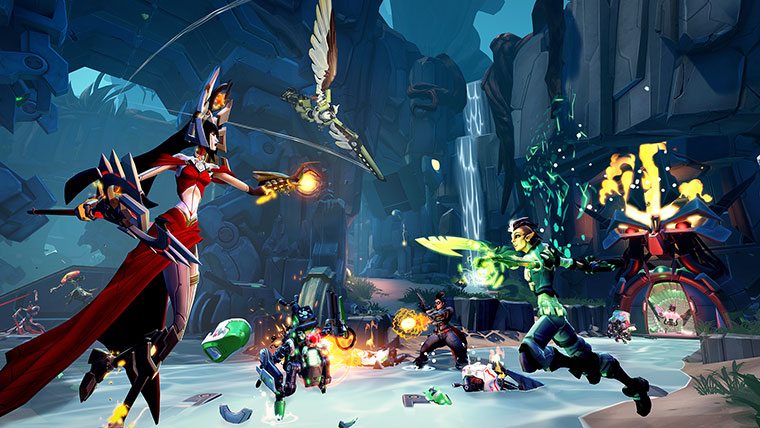
Battleborn has been described as Gearbox Software’s entry into the popular MOBA genre. While some of the comparisons are fair to make as they use a lot of ideas from games like Smite or League of Legends, Battleborn is decidedly more action-oriented. Meltdown, alongside their Incursion mode use these ideas the most, by adding an AI element to these competitive modes. While we didn’t get a chance to play the Incursion mode, which tasks players with toppling an enemy tower alongside AI creep, Meltdown is yet another twist on this formula.
Battleborn Meltdown Gameplay
Minions in Meltdown march their way to death by incineration. Your team’s objective is protect those minions so they can “safely” hop in an enemy incincerator. However, the other team of heroes is also trying to protect their minions and guide them to death. This mode once again relies on all of the gameplay elements from the other competitive and cooperative modes in Battleborn. Hero powers, collecting shards, and controlling points on the map that can offer power-ups like turrets. Players will focus on both leveling their characters and playing their class efficiently to help the team as a whole.
Battleborn Interview with Randy Varnell of Gearbox
AOTF: What type of gamer is Battleborn for?
Randy Varnell: It’s everybody, you know. When we really look at it, it’s similar to what I say for Borderlands. You look at the type of player that Borderlands appeals to, and you know Borderlands players, RPG players. But there’s a part of Borderlands that wanted to bring co-op people together. We did a lot of work with a set of characters with different roles and different loot and we kept hearing stories from users that they play with their significant others, they play with their families, they play with their children, they play with their dad, they play with their mom. Battleborn, it’s kind of the same type of thing. I think the marketing phrase is “core gamers,” but really it’s for a lot of different people. Do you like video games?
AOTF: Certainly, but Battleborn is casting a wide net with its competitive and cooperative modes
Randy Varnell: It is for core gamers, I’m hoping it has a broad appeal. But when you come down to it and look at the core DNA of the game, I always come back to the characters. There are a lot of different things for the characters to do, but the game is a character-centric game. The game really started for us at the end of Borderlands 2, we’d released the game with the four characters and were working on the downloadable content and we were having so much fun making new characters that we wanted to do so much more with them. We started thinking about that and started designing the characters for Battleborn. Of all the things that Borderlands is known for, it’s mix of genres and all of that, the thing to me that I always come back to is the gun system. The gun system was amazing. It did so many things and had so many different combinations, and when we were designing the gun system for Borderlands we really thought about what are guns in other games that we can’t represent here. How do we take parts of those and integrate them back into our game. When we started Battleborn, it was kind of that same type of question, except this time it was with characters.
What characters do we love to play? What characters do we love to play in shooter games? What characters do we love to play in action games? You take someone like our swordsman in Battleborn, Rath, who has the two blades. If you play him, it’s almost like Legend of Zelda, that action game kind of rythym, it’s almost like a fighting game that you have to learn the timing.
AOTF: Definitely. That’s where the learning curve is. You can run in there and mash the buttons and have fun with it, but there’s definitely a learning curve when it comes to the specials and the leveling system tied to them.
AOTF: You guys already created a universe in Borderlands that got people invested in those characters. Now you’ve got a game with 25 characters, How do you plan on getting people invested in this whole new universe? Is it the gameplay that you are hoping will hook players?
Randy Varnell: I think it’s kind of a full court press type of strategy. We’re hoping everything does. Gameplay for certain, but each one of these characters, I can talk about it in terms of budget, but in terms of investment for us emotionally and quality wise and balance and tuning wise, costs us about as much as a Borderlands character did. These characters have to hold their own. We don’t have the gun system to fall back on, where a procedural gun system can be your expression of gameplay. Each character has to feel unique. That’s the promise of this game, each character needs to move different, it needs to have some different subtelties to it. Some little things you might not even notice is like characters have an offhand melee, every one expresses different. For example, Thorn’s when she jumps up and off-hand melees actually pushes her back just a little bit. She jumps up in the air and it gives her a little bit of directional control. Melka, one of the other characters, she’s in the greenish armor with the blade and poison gun, when she runs and does an off-hand melee she does a slide along the ground instead of just a standard punch. So there’s some interesting layers and details in these characters. So it starts with the small details, and it has a fun gameplay loop. Part of what we really hope is that the characters are first play accessible. The variety will hopefully give you multiple opportunities to let you find things that you love, things that you like, maybe some things that you don’t like but are willing to try but are still viable gameplay elements. It’s similar to gun manufacturers of Borderlands. We like to make sure that all of our characters are loved by some, and if some are hated by some, that’s ok too. It’s part of the variety promise.
AOTF: So Battleborn has been compared to a MOBA in a lot of the pre-release coverage. Are you guys embracing that or trying to dodge that comparison?
Randy Varnell: A little bit. I think the most correct way to say that is that I don’t think it’s correct to pigeon hole us as a MOBA. When you start to smell like it at all, as big as MOBAs are in their area right now, it’s really quick for people to say ‘aww it’s just another MOBA.’
AOTF: So you’ve discussed and shown three modes. Are there going to be any more?
Randy Varnell: I hope so. Not at launch, but at Gearbox we love to support games post launch. We did so with every Borderlands title we ever made, in lots of different ways. In Borderlands we did DLC characters, we did additional modes, additional maps to play, more campaign content. Borderlands 2 we did a lot of skins, we did a lot of little small packs and expansions. Battleborn has kind of been structured with that as a starting base, but it all gets down to the point of how people like the game. If people like it and support it, buy it and love it, I’ve got a thousand more character ideas. We certainly have more. Gearbox has an iterative process to development and so we prototype a lot and what we end up keeping in a game ends up being about 20 – 30 percent of what we’ve at least developed up to a point. So we have a lot of other modes and lot of other ideas that we’ve played in house. Some of them I like a lot. Some of them I really fought for to get into the core game, but for different reasons, sometimes they’re just too elaborate or too big or didn’t work or had some problems that we couldn’t solve at the time. I hope we come back to it and do more. Yeah, I’d love to do more post launch.
AOTF: With any competitive multiplayer game, certainly one as dynamic as Battleborn, balancing comes into play. We saw it in our preview where there was that one piece extremely over powered gear that turned the tide of a match, it’s got to be something that you’ve got to be tweaking constantly?
Randy Varnell: It’s been since the beginning. It’s the first time Gearbox has come back to a competitive game in awhile. We ported Halo to PC and we did some porting of Counter Strike too, so we were engaged in both those franchises. But other than some secondary multiplayer in the Brothers in Arms titles we haven’t done a dedicated multiplayer thing for years. So that was one of the goals of Battleborn, is to come back to that in a big way. We’ve done some things to help with that from the beginning. I think three months after we started the project we had the game up in a playable competitive prototype that was really rough at the time. We’ve had a team-based ethos playing almost every day, seeing how it feels and talking balance. We’ve also built a back-end infrastructure that’s capable of tracking stats and data and sorts of metrics of play. You kind of need both parts of that to understand balance. You need to hear what people are feeling and what they are saying, but you also have to see what the game is saying. We’re spending a lot of time in that getting ready for it, and are absolutely planning on post launch support.
AOTF: Is Battleborn “Always Online”
Randy Varnell: Yes, and there’s several reasons for that. One is especially in competitive. You’re on dedicated servers, we’re actually using the Thunderhead Microsoft servers, the same ones that were used for Titanfall. So that gets out of that weird oddity that you’re doing host migrations or the host is bearing the load for the competitive game.
AOTF: You’ve taken so many things that you’ve learned from Borderlands and incorporated them into Battleborn. Obviously, this game isn’t Borderlands 3 but the aesthetic is similar, you’ve got the loot system, the cooperative gameplay, the trademark humor, so many things ring back to Borderlands. And a lot of the competitive stuff is probably things that Borderlands players would want to see in that series. So why isn’t this game called Borderlands Online, or 3?
Randy Varnell: There’s some fundamental differences with what we wanted to do here that really aren’t quite compatible to the Borderlands universe. Some of them are fiction, some of them are gameplay. Fiction wise, when we started looking at the amount of different archetypes and character experiences we wanted, we really wanted that gun guy versus magic guy versus sword guy and then expand out from there. Borderlands kinda has magic with the Sirens, but not really. If you stay true to canon, unless we really, ridiculously, developed that out, that’s not really something that’s part of the universe yet. It’s not really a fantasy expression game. It’s hard to do those types of expressions. We could never put an elf with a bow in Borderlands for example. We could never do a dwarf with an axe in Borderlands. We did Salvador, who I guess is technically a dwarf with guns, but it’s not the same thing. Part of the charm of doing a hero game like Battleborn is being able to have some familiar archetypes next to some unfamiliar archetypes…. So we wanted to create a universe that could contain that, could attach it to a fiction that we could still build on that has a world, has a story that we’re telling and get that done.
And… Borderlands isn’t done. I worked for a while at Ensemble Studios and one of the things I learned back then that is certainly true now is that in any size studio that has an especially successful franchise like Age of Empires was for Ensemble or Borderlands is for Gearbox, it’s also really a healthy thing a studio has to do to offer some other brands for people that contribute a lot. Think of Borderlands 2. By the time we got to the end of Borderlands 2 in 2012, there were some people that had been working on Borderlands for seven or eight years. A lot of the young developers, that was all of their professional career. They’ve never done anything else. After that amount of time on a single thing, sometimes the developers need a way to cycle out and express different things. Interestingly enough, when we make a game as Gearbox, it often smells like a Gearbox game. There are things that are going to come out in all of that. Part of being able to create anew, come back fresh and take a fresh approach, even if it comes out similar, it’s a really important exercise for us. There are a number of reasons that we did Battleborn instead of Borderlands 3.
The Takeaway
The big takeaway from our hands-on time with Battleborn and speaking with developers on this game is that this latest entry from Gearbox Software has something for everyone. Obviously with months to go between our hands-on impressions and the actual release of the game a lot of things can change. But what we played felt both accessible and deep. They’ve taken the limitless customization of the Borderlands gun system and created something that rivals that in heaps of character customization and personalization that make each match, be it cooperative or competitive play differently than the last.
While our time with the game was short, Battleborn will head into an closed technical test that you can participate in on October 29th and try it out for yourself.



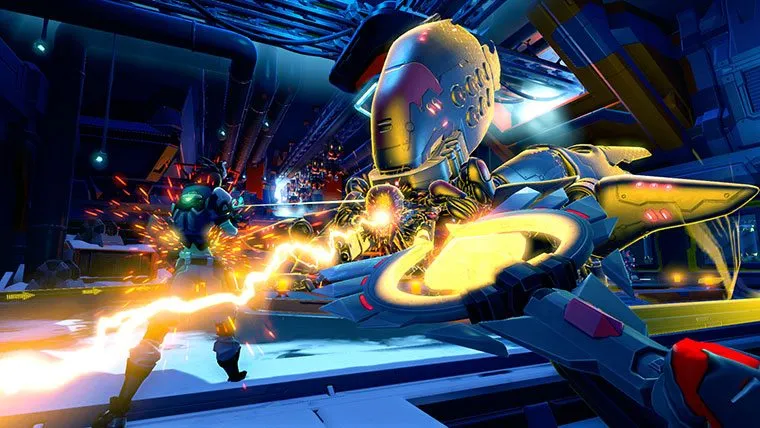
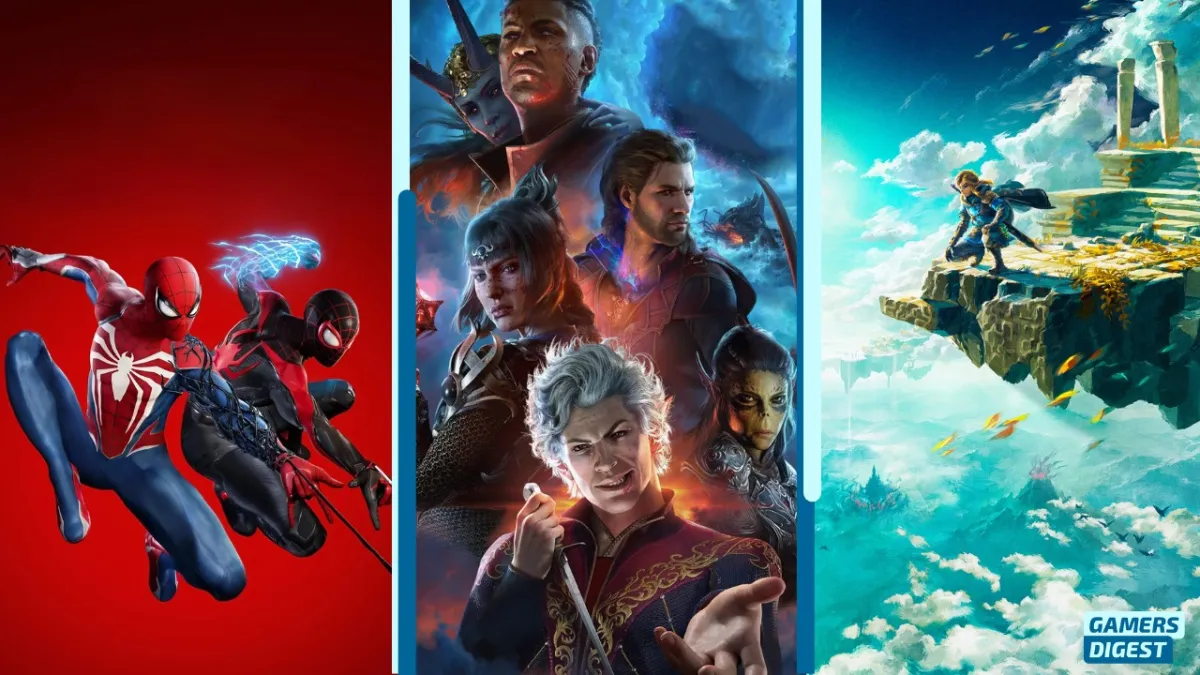

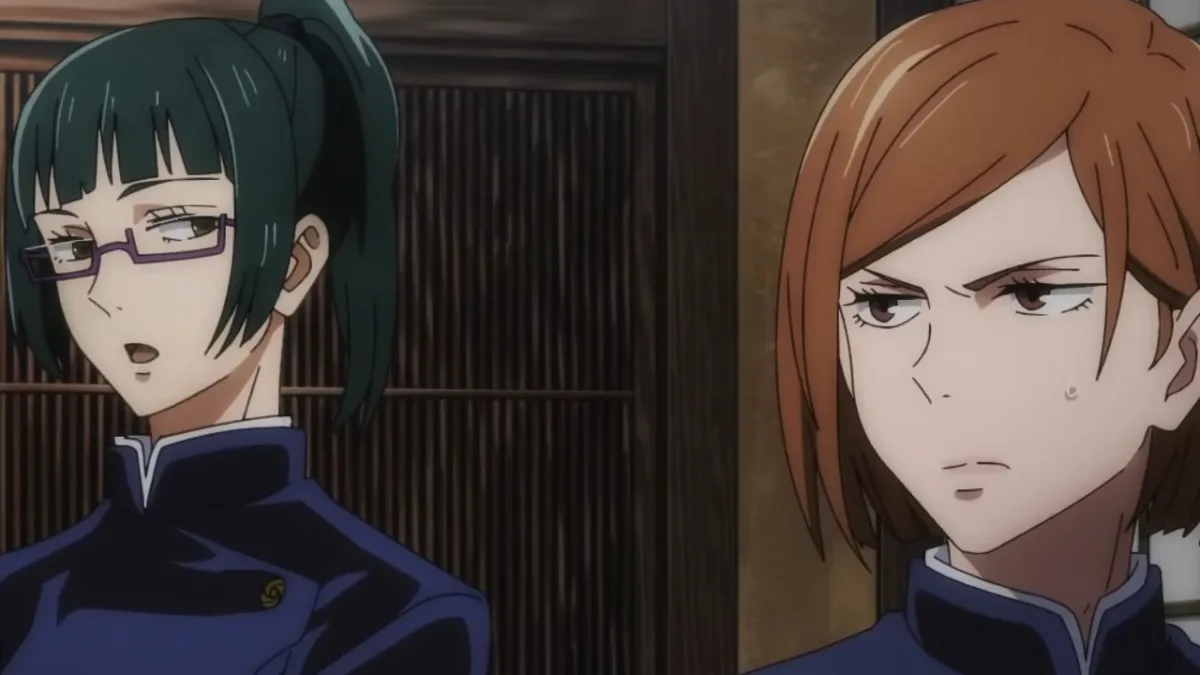
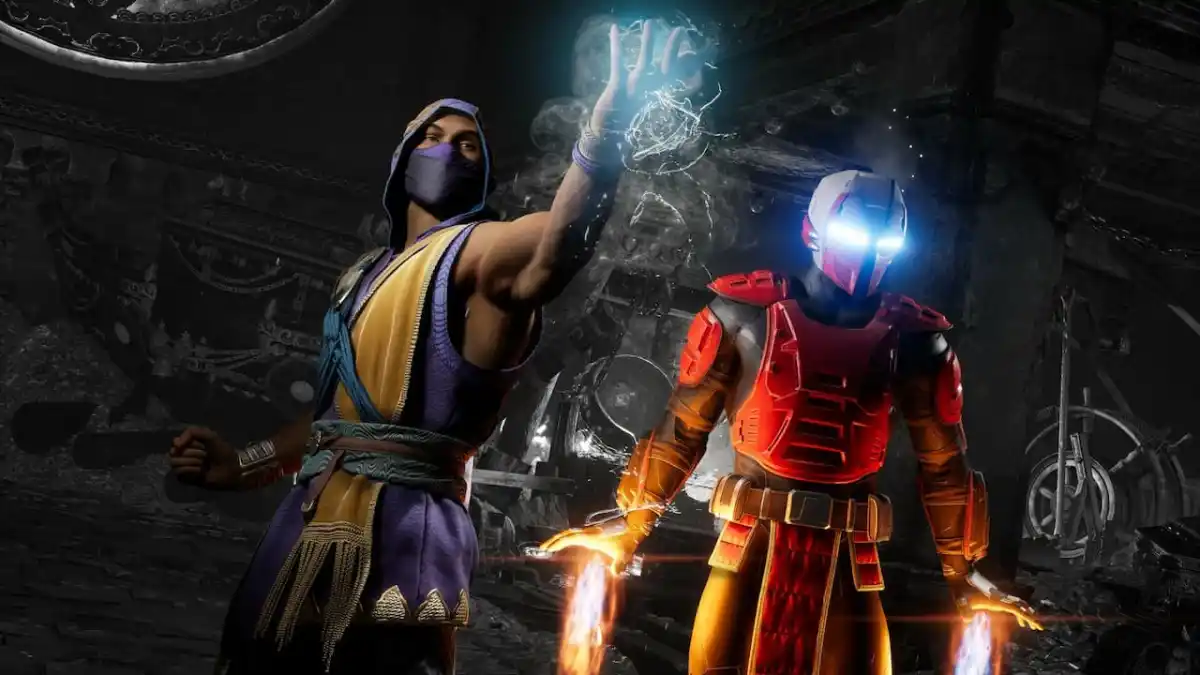

Published: Oct 27, 2015 02:00 pm